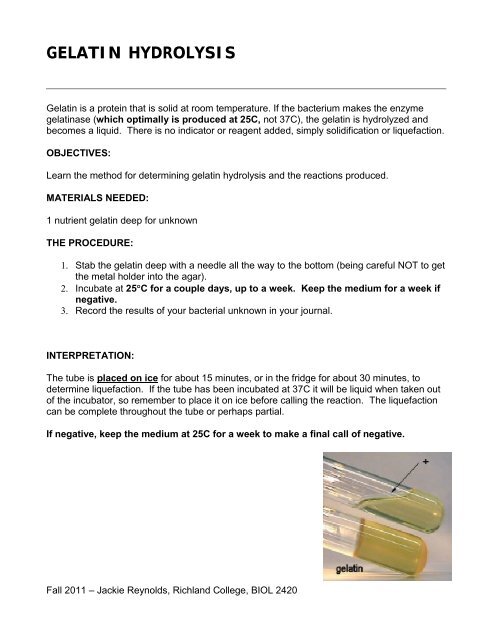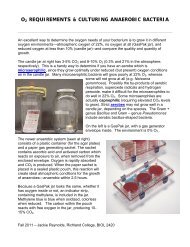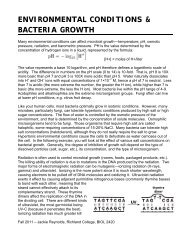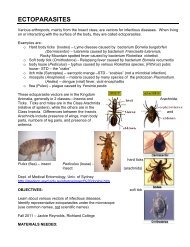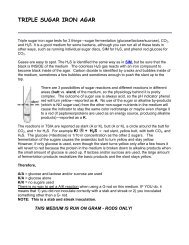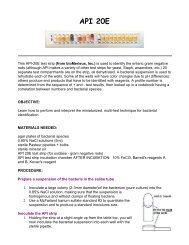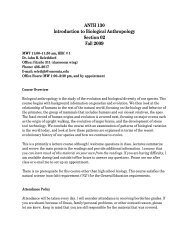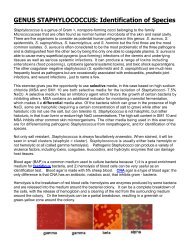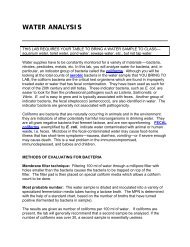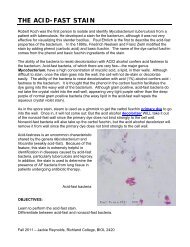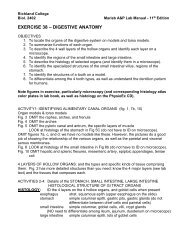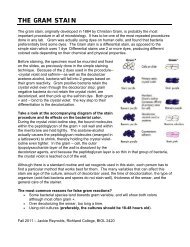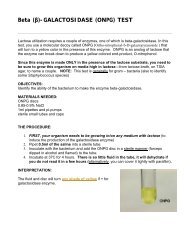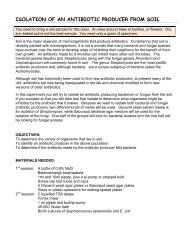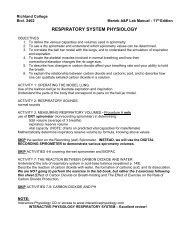GELATIN HYDROLYSIS
GELATIN HYDROLYSIS
GELATIN HYDROLYSIS
You also want an ePaper? Increase the reach of your titles
YUMPU automatically turns print PDFs into web optimized ePapers that Google loves.
<strong>GELATIN</strong> <strong>HYDROLYSIS</strong>Gelatin is a protein that is solid at room temperature. If the bacterium makes the enzymegelatinase (which optimally is produced at 25C, not 37C), the gelatin is hydrolyzed andbecomes a liquid. There is no indicator or reagent added, simply solidification or liquefaction.OBJECTIVES:Learn the method for determining gelatin hydrolysis and the reactions produced.MATERIALS NEEDED:1 nutrient gelatin deep for unknownTHE PROCEDURE:1. Stab the gelatin deep with a needle all the way to the bottom (being careful NOT to getthe metal holder into the agar).2. Incubate at 25C for a couple days, up to a week. Keep the medium for a week ifnegative.3. Record the results of your bacterial unknown in your journal.INTERPRETATION:The tube is placed on ice for about 15 minutes, or in the fridge for about 30 minutes, todetermine liquefaction. If the tube has been incubated at 37C it will be liquid when taken outof the incubator, so remember to place it on ice before calling the reaction. The liquefactioncan be complete throughout the tube or perhaps partial.If negative, keep the medium at 25C for a week to make a final call of negative.Fall 2011 – Jackie Reynolds, Richland College, BIOL 2420
LABORATORY REPORT SHEETQUESTIONS:1. Why place this medium on ice to test for a positive reaction?2. This gelatinase enzyme is temperature-sensitive, and preferably works best at whattemperature?June 2005 - Jackie Reynolds/Mark Farinha, Richland College 2


